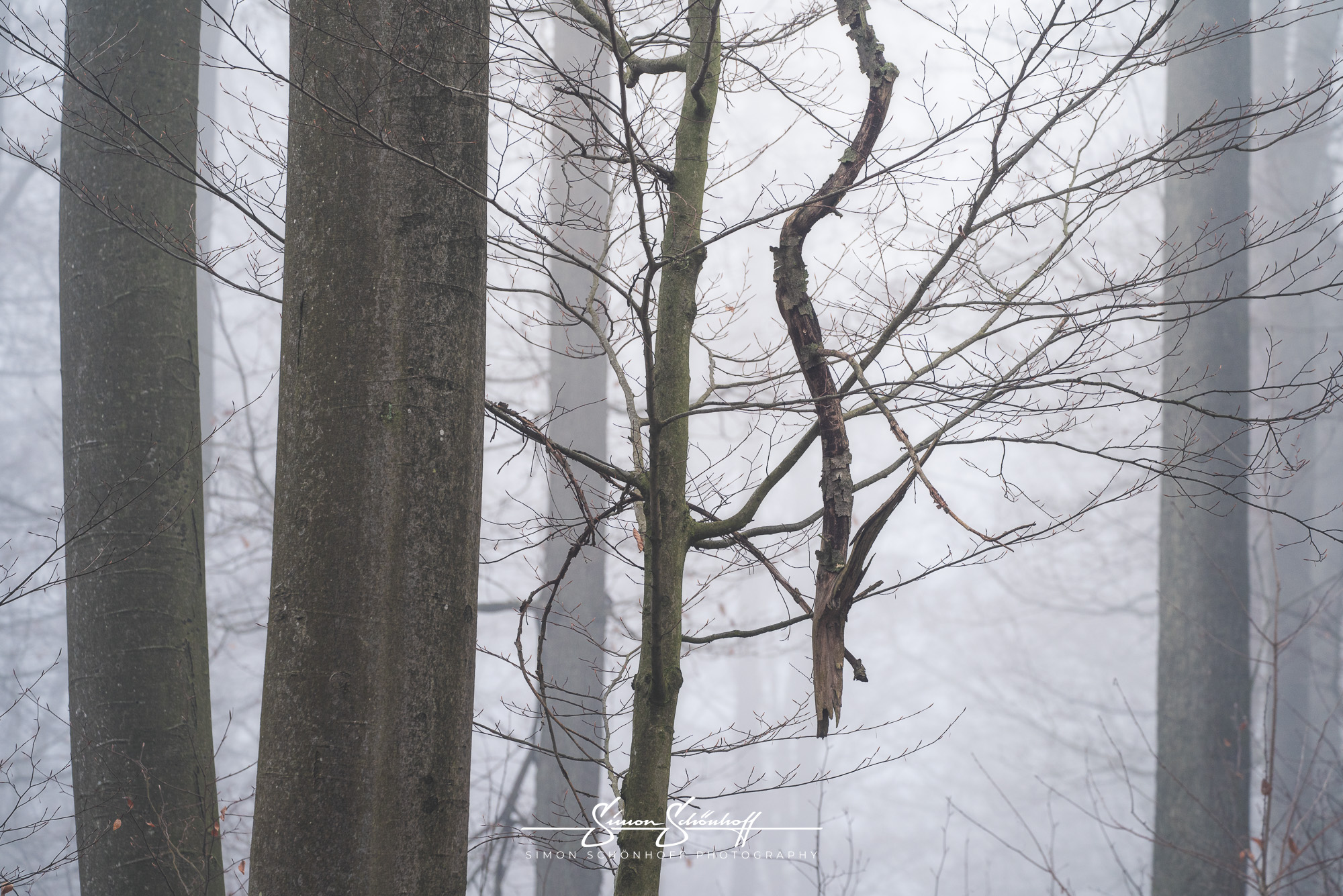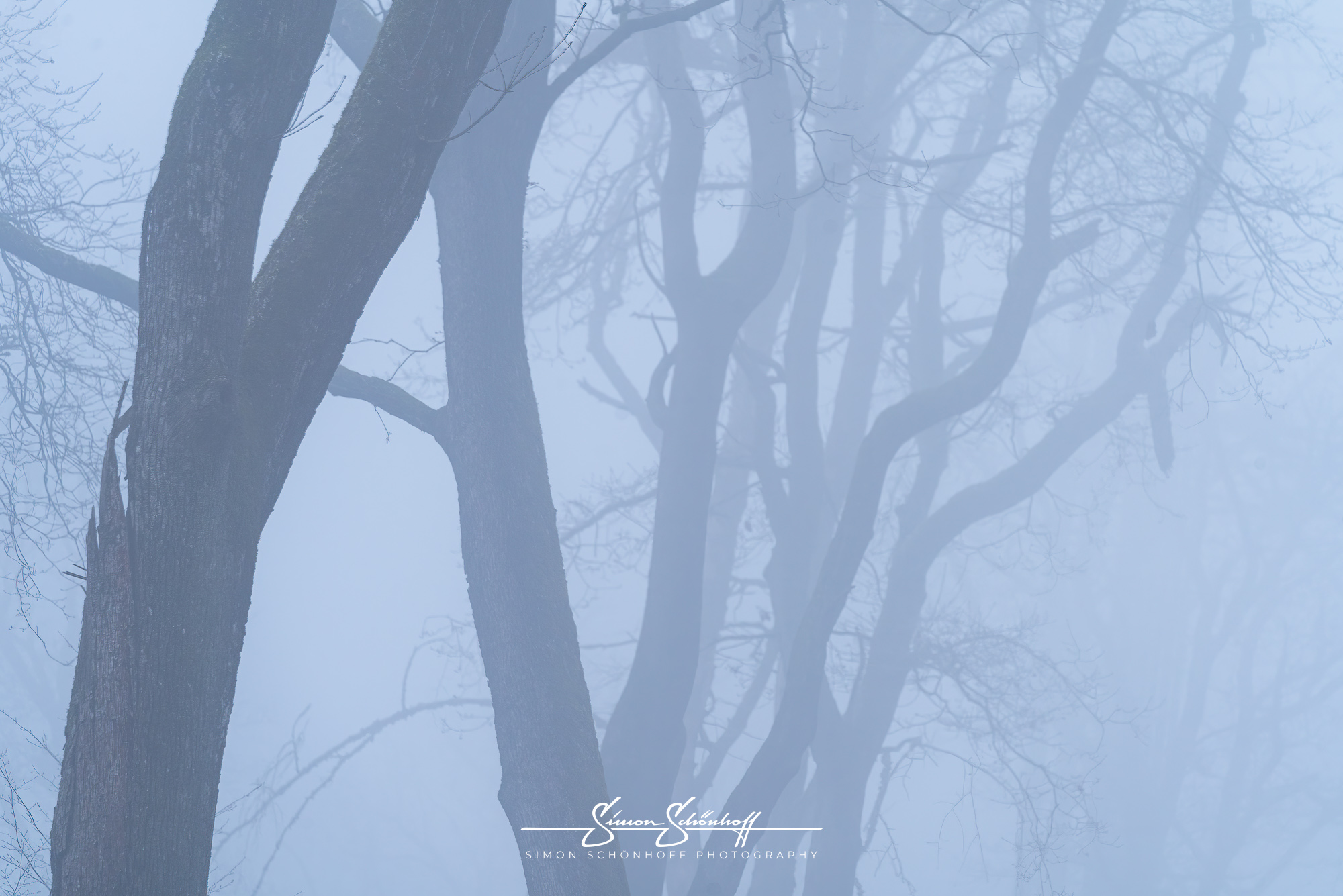
Gear:
Sony a7III
Sony FE 4/24–105 mm G OSS
Sony FE 100–400 mm GM
DJI Mini 3 Pro
Late winter, or even early spring, is often particularly dreary and rarely invites photo excursions into nature in our latitudes. Yet it is precisely this dreariness that can make for beautiful minimalist shots in the forest, I thought to myself as I drove into a nearby beech forest this morning in a pleasantly thick fog. You can see how I took the pictures for this blog post in the video at the end of the post.

The choice of location is particularly important for this type of forest photography. To create minimalist shots, a beech forest should be particularly well suited. I find the dark, straight, elongated trunks of the beech trees ideal. But I’m sure other forest scenes will also come into question.
Sucht zwischen den langgezogenen geraden Bäumen, nach außergewöhnlichen Elementen. Bäume die “aus der Reihe tanzen”, schräg liegen oder eine besondere Form haben. Vielleicht findet sich noch ein kleines Bäumchen oder einen Ast, der als einziger noch Blätter des letzten Jahres trägt, in Mitten der kahlen Natur.

Reduce the scene as much as possible, but make sure you don’t photograph the subject alone. Without context, the best motif can simply look boring. A curved tree only looks special if there are many trees with straight growth around it. Or pay attention to whether two or more trees are in proportion to each other. Of course, a context can also be empty space if a tree is particularly free-standing.

If you are not sure whether more or less makes sense in the scene, take several shots. If necessary, you can always crop the image in image editing. Don’t be afraid to take out more than usual. However, as soon as the image becomes unclear, you have probably cropped too much.
For minimalist shots, forget the wide-angle lens. It will probably pack far too much of the scene onto the sensor. A minimalist shot is much easier with a telephoto focal length.

This and all other shots of this post you can request under “Prints” as an art print for your wall at home directly from me.
Certain weather conditions help to create such minimalist shots, of course. Ideal conditions should be a really nice dense fog. But haze or rain can also help to reduce a scene. Such weather conditions also create a very special mood in the image in addition to the reduced detail of the scene.


Of course, you can also create minimalist photographs in any other season. Even in less than ideal conditions. Make sure that you get strong contrasts. Backlight situations can turn trees into silhouettes that are reduced entirely to their shape. Or try to reduce the colours in the picture. This is not much of a problem in a summer forest, for example.
If it is humid, then definitely test the use of a polarising filter. It helps to reduce the shine on leaves and makes the colours shine.


Another way of reducing details to make an image more minimalistic is to use other techniques, such as ICM (Intentional Camera Movement). This involves deliberately moving the camera during the exposure time. This requires some practice and produces many images, only a few of which are used.

In my Youtube video “Minimalist forest shots — How to do it!” I show you how I took the minimalist forest shots in this post and you can see how I put these tips into practice. Check it out and get inspired! Feel free to comment with any other helpful tips you think of and leave a subscribe! I’m looking forward to it!